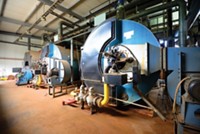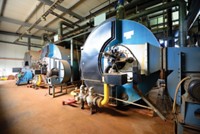Advertisement
Grab your lab coat. Let's get started
Welcome!
Welcome!
Create an account below to get 6 C&EN articles per month, receive newsletters and more - all free.
It seems this is your first time logging in online. Please enter the following information to continue.
As an ACS member you automatically get access to this site. All we need is few more details to create your reading experience.
Not you? Sign in with a different account.
Not you? Sign in with a different account.
ERROR 1
ERROR 1
ERROR 2
ERROR 2
ERROR 2
ERROR 2
ERROR 2
Password and Confirm password must match.
If you have an ACS member number, please enter it here so we can link this account to your membership. (optional)
ERROR 2
ACS values your privacy. By submitting your information, you are gaining access to C&EN and subscribing to our weekly newsletter. We use the information you provide to make your reading experience better, and we will never sell your data to third party members.
Environment
Regulating CO2 Emissions
Litigation: Supreme Court to review EPA plan to limit industrial releases of the greenhouse gases
by Jeff Johnson
October 17, 2013
| A version of this story appeared in
Volume 91, Issue 42
The Supreme Court gave several industries a victory last week when it agreed to review next year part of the Environmental Protection Agency’s approach to regulate greenhouse gas emissions.
Industry groups, including the American Chemistry Council, a chemical industry trade association, brought the case. At issue is EPA’s attempt to use the Clean Air Act to limit greenhouse gas emissions from industrial facilities such as refineries, power plants, and chemical companies.
These groups argue that EPA’s proposed regulatory approach “oversteps the authority granted by Congress in the Clean Air Act,” according to the American Petroleum Institute, an oil industry trade group. Similarly, ACC says EPA has “misread” the Clean Air Act and its carbon dioxide permitting scheme “is not the appropriate way to address greenhouse gas emissions from industrial sources.”
Environmental groups such as the Sierra Club and the Natural Resources Defense Council, however, interpret the Court’s decision to review the case as a narrow examination of a small part of the Clean Air Act.
The debate over the connection between the Clean Air Act and CO2 emissions stretches back to 2007 when the Supreme Court ruled that the law gave EPA authority to regulate CO from new vehicles. The Obama Administration expanded that authority to cover industrial or “stationary” sources of greenhouse gases.
This approach to controlling emissions from smokestack industries got backing from a federal appeals court. In June, the U.S. Court of Appeals for the District of Columbia Circuit tossed out a business challenge to EPA’s effort to limit industrial sources of CO2. The court called the agency’s action “unambiguously correct.”
However, the Supreme Court last week in a single sentence said it would review the lower court’s decision and examine whether “regulation of greenhouse gas emissions from new motor vehicles triggered permitting requirements under the Clean Air Act for stationary sources that emit greenhouse gases.”





Join the conversation
Contact the reporter
Submit a Letter to the Editor for publication
Engage with us on Twitter